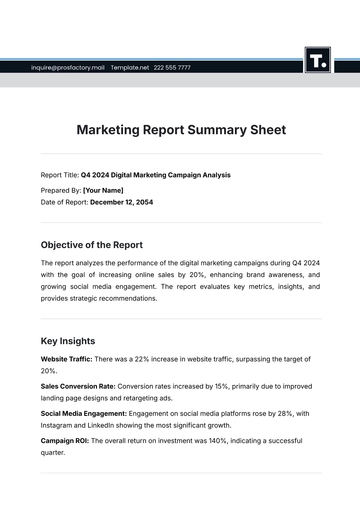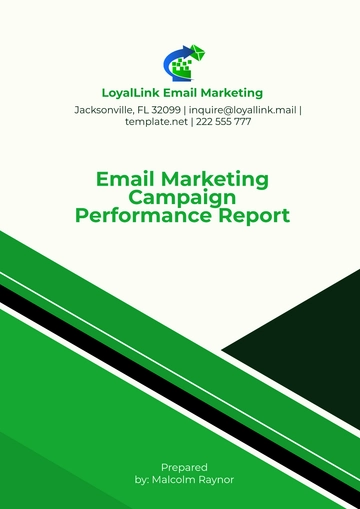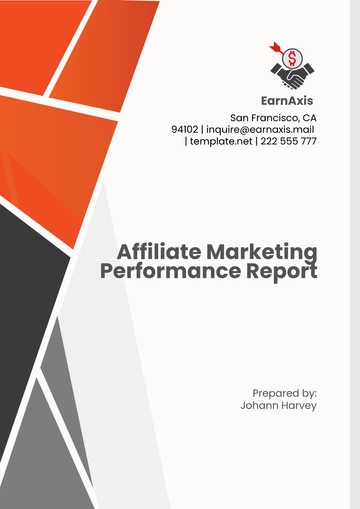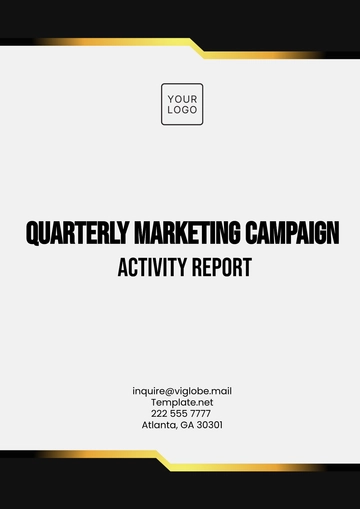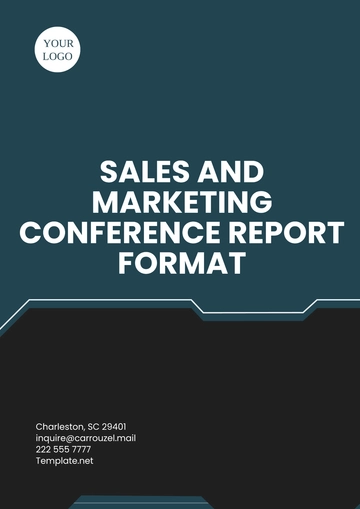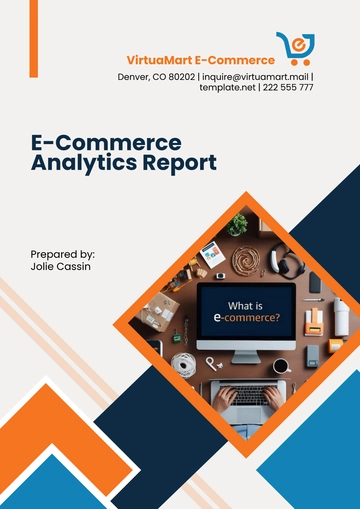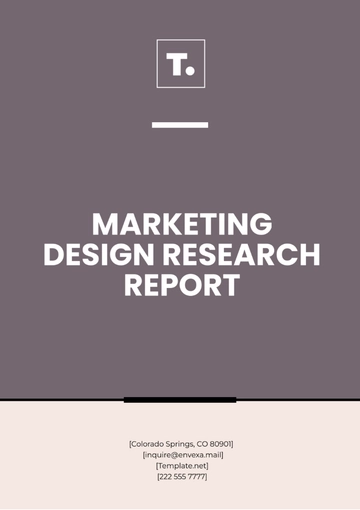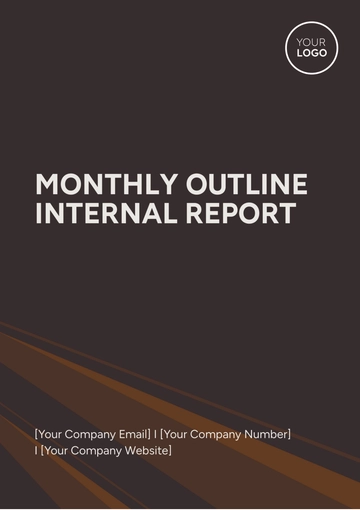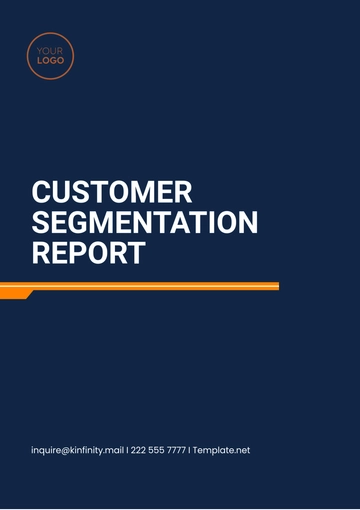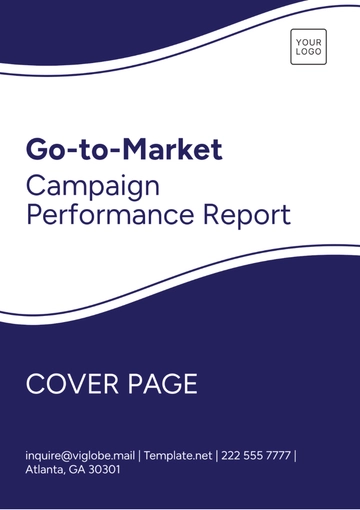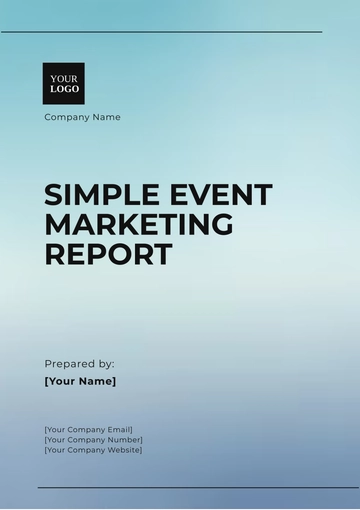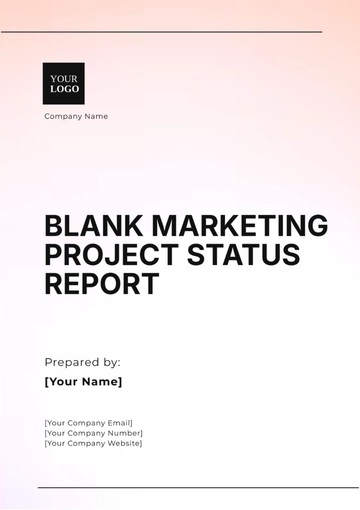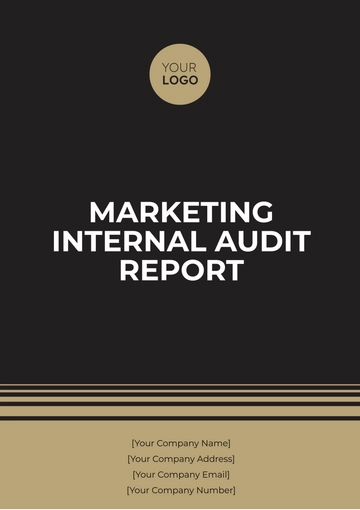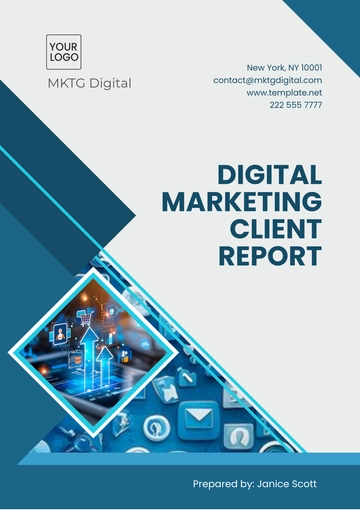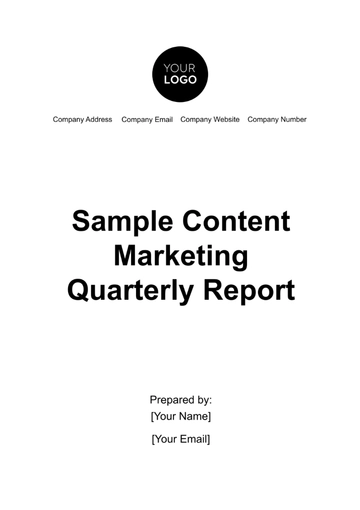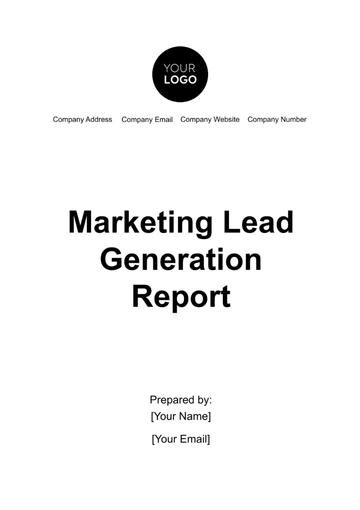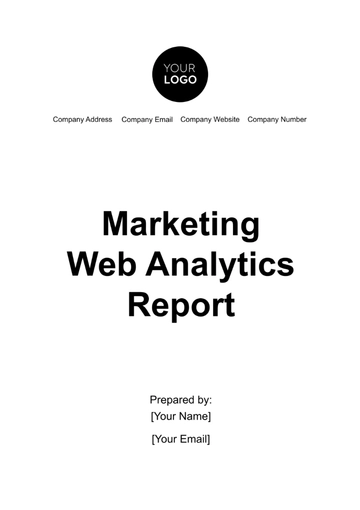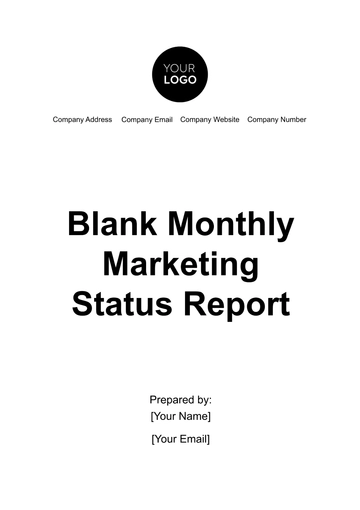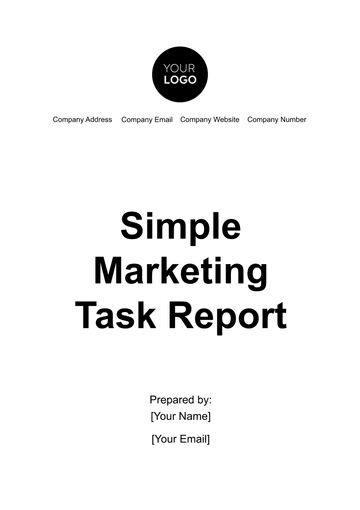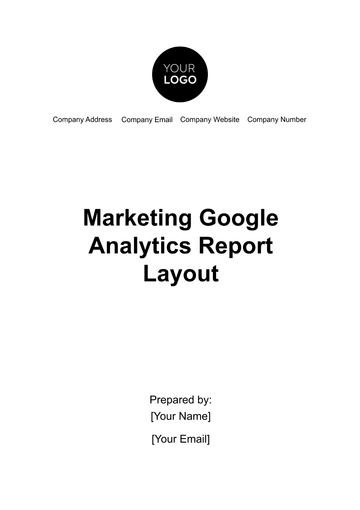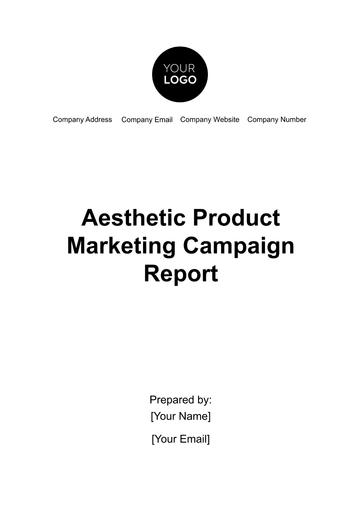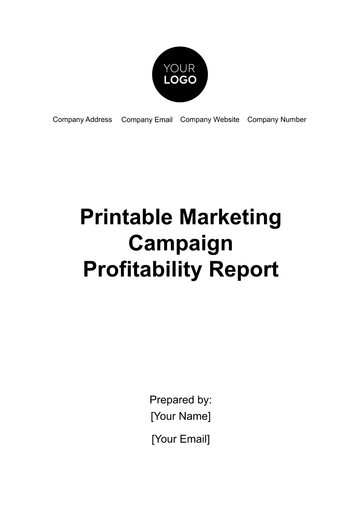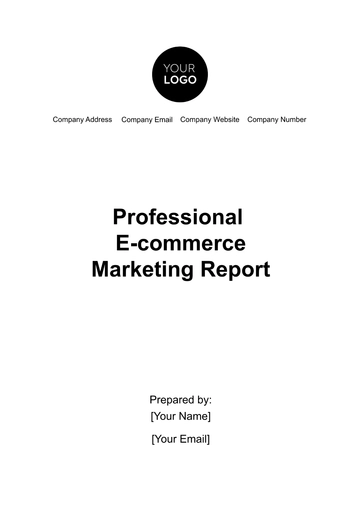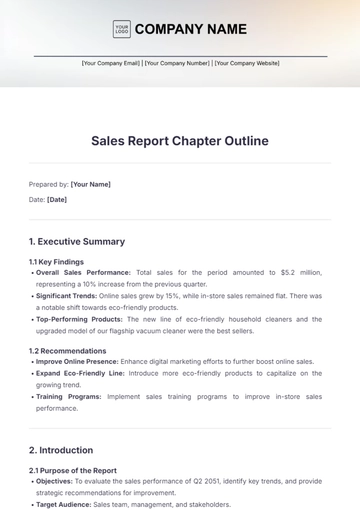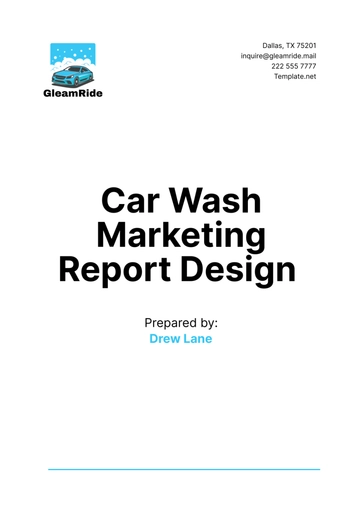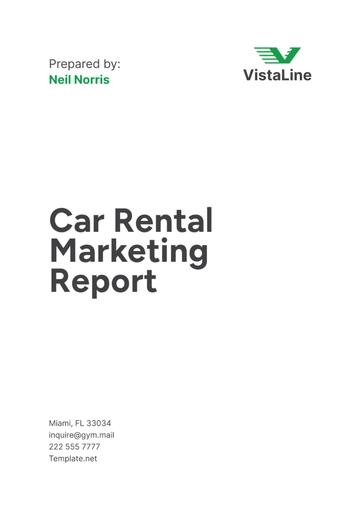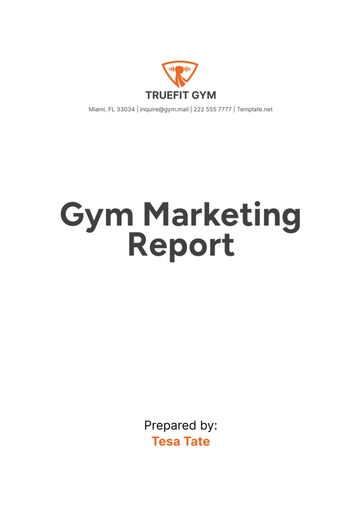Free Tourism Marketing Report

Report prepared by: | [Your Name] |
Company: | [Your Company Name] |
Address: | [Your Company Address] |
Date: | [INSERT DATE] |
I. Executive Summary
As a leading travel company, this report provides a comprehensive overview of our recent marketing endeavors within the tourism industry. Through an in-depth analysis of our strategies, target audience preferences and performance evaluation, we aim to gain valuable insights to refine our marketing approach and enhance our competitive edge.
II. Methodology
A. Data Collection
Our data collection process involved a combination of primary and secondary research methods. We conducted customer surveys, analyzed website and social media analytics, and reviewed industry reports to gather relevant data for this report.
B. Analysis Techniques
Utilizing advanced statistical analysis and trend forecasting techniques, we dissected the collected data to uncover meaningful patterns and trends. Comparative analysis with industry benchmarks further enriched our insights.
C. Limitations
Despite our rigorous approach, certain limitations were encountered during the research process. These included sample size constraints in certain demographic segments and potential biases in self-reported survey responses.
III. Market Analysis
Market Segment | Key Trends | Opportunities | Challenges |
|---|---|---|---|
Domestic Tourism | Post-pandemic travel surge observed, with families seeking safe and memorable experiences closer to home. | Opportunities exist for tailored packages catering to specific interests and travel preferences. | Seasonal fluctuations and unpredictable weather patterns may impact travel patterns. |
International Tourism | Despite travel restrictions, there's a gradual rebound in international travel, especially among affluent millennials seeking unique cultural experiences. | Opportunities for partnership with luxury travel agencies and eco-tourism initiatives. | Challenges include navigating complex visa regulations and geopolitical uncertainties. |
IV. Target Audience Segmentation
Segment | Characteristics | Preferences | Behavior |
|---|---|---|---|
Families | Family-oriented, prioritize safety and convenience in travel planning. | Prefer all-inclusive packages with kid-friendly activities and amenities. | Tend to book vacations during school breaks and holidays. |
Millennials | Adventure-seeking, value authenticity and sustainability in travel experiences. | Prefer off-the-beaten-path destinations and immersive cultural experiences. | Highly engaged on social media platforms for travel inspiration and recommendations. |
V. Marketing Strategies and Tactics
A. Digital Marketing
Our digital marketing strategy focused on optimizing our website for search engines, creating engaging social media content, and leveraging influencer partnerships to amplify our brand presence.
B. Partnerships and Collaborations
Strategic collaborations with local businesses, hotels, and tourism boards allowed us to offer exclusive travel packages and experiences, enhancing our value proposition to customers.
C. Event Sponsorships
Through strategic sponsorships of events and festivals, we heightened our brand visibility and engagement with potential travelers, reinforcing our position as a trusted travel provider.
VI. Performance Evaluation
Metric | Goal | Actual Performance | Discrepancy |
|---|---|---|---|
Website Traffic | Targeted a 20% increase | Achieved a 25% increase | Exceeded expectations |
Social Media Engagement | Aiming for a 15% growth | Achieved a 12% growth | Slight underperformance |
VII. Recommendations
A. Increase Social Media Engagement
We aim to boost social media engagement by setting KPIs for likes, shares, comments, and follower growth, with a focus on creating compelling visual content and interactive campaigns.
B. Enhance Website Conversion Rate
To improve website conversion rates, we'll set KPIs for booking conversions, inquiries, and user engagement metrics, while enhancing user experience through personalized content and streamlined booking processes.
C. Expand Targeted Advertising
Expanding our targeted advertising efforts, we'll set KPIs for ad reach, click-through rates, and conversion rates, utilizing data-driven insights to tailor campaigns to specific demographics and geographic regions.
VIII. Conclusion
In conclusion, this report provides valuable insights into our marketing performance and outlines actionable recommendations to drive future growth and success in the dynamic tourism landscape. By leveraging the findings presented herein, we are poised to strengthen our brand presence, engage with our target audience more effectively, and drive meaningful business outcomes.
- 100% Customizable, free editor
- Access 1 Million+ Templates, photo’s & graphics
- Download or share as a template
- Click and replace photos, graphics, text, backgrounds
- Resize, crop, AI write & more
- Access advanced editor
Introducing the Tourism Marketing Report Template by Template.net. Crafted for travel businesses seeking a competitive edge, this editable and customizable gem is your key to insightful marketing strategies. Seamlessly tailor your reports with ease, courtesy of our Ai Editor Tool. Elevate your tourism game effortlessly with this essential template. Unlock your potential today.
You may also like
- Sales Report
- Daily Report
- Project Report
- Business Report
- Weekly Report
- Incident Report
- Annual Report
- Report Layout
- Report Design
- Progress Report
- Marketing Report
- Company Report
- Monthly Report
- Audit Report
- Status Report
- School Report
- Reports Hr
- Management Report
- Project Status Report
- Handover Report
- Health And Safety Report
- Restaurant Report
- Construction Report
- Research Report
- Evaluation Report
- Investigation Report
- Employee Report
- Advertising Report
- Weekly Status Report
- Project Management Report
- Finance Report
- Service Report
- Technical Report
- Meeting Report
- Quarterly Report
- Inspection Report
- Medical Report
- Test Report
- Summary Report
- Inventory Report
- Valuation Report
- Operations Report
- Payroll Report
- Training Report
- Job Report
- Case Report
- Performance Report
- Board Report
- Internal Audit Report
- Student Report
- Monthly Management Report
- Small Business Report
- Accident Report
- Call Center Report
- Activity Report
- IT and Software Report
- Internship Report
- Visit Report
- Product Report
- Book Report
- Property Report
- Recruitment Report
- University Report
- Event Report
- SEO Report
- Conference Report
- Narrative Report
- Nursing Home Report
- Preschool Report
- Call Report
- Customer Report
- Employee Incident Report
- Accomplishment Report
- Social Media Report
- Work From Home Report
- Security Report
- Damage Report
- Quality Report
- Internal Report
- Nurse Report
- Real Estate Report
- Hotel Report
- Equipment Report
- Credit Report
- Field Report
- Non Profit Report
- Maintenance Report
- News Report
- Survey Report
- Executive Report
- Law Firm Report
- Advertising Agency Report
- Interior Design Report
- Travel Agency Report
- Stock Report
- Salon Report
- Bug Report
- Workplace Report
- Action Report
- Investor Report
- Cleaning Services Report
- Consulting Report
- Freelancer Report
- Site Visit Report
- Trip Report
- Classroom Observation Report
- Vehicle Report
- Final Report
- Software Report
